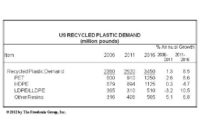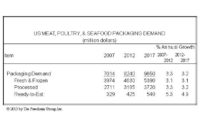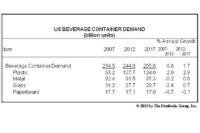US Demand for adhesives and sealants to reach 9.8 billion pounds in 2017

US demand for adhesives and sealants will rise 2.2% per year to 9.8 billion pounds in 2017, valued at $11.9 billion. Gains will be driven by an improved outlook for major adhesives and sealants markets such as paper packaging, motor vehicles, and building construction, following the recession-plagued 2007-2012 period. Demand will also benefit from trends toward greater use of adhesive bonding compared to alternative joining technologies, such as mechanical fasteners, in product assembly applications. However, advances will be limited by trends toward high solids formulations and lower application weights, which will reduce the total volume of adhesives and sealants consumed, and by market maturity and sluggish growth in a number of key applications. These and other trends are presented in Adhesives & Sealants, a new study from The Freedonia Group, Inc. (www.freedoniagroup.com), a Cleveland-based industry market research firm.
Natural adhesives and sealants will remain the largest product type through 2017, accounting for nearly 40% of demand by weight. However, natural products will also see the weakest gains going forward, as the bulk of demand consists of low value starch adhesives used in corrugated cardboard production, a highly mature and slow growing application. The most rapid advances are expected for reactive adhesives and sealants, fueled by the rebounding manufacturing market, as well as by product substitution trends toward higher value materials. Hot melts will also see healthy gains, as their amenability to fast processing speeds will promote opportunities in the packaging market, while their lack of volatile organic compound (VOC) emissions will continue to make hot melts an environmentally preferable option.
Despite decades of losing share to alternative formulations, solvent-based adhesives and sealants will see above average increases in demand, bolstered by a turnaround in the construction sector and product reformulation efforts to lower VOC emissions. More moderate gains for emulsion and dispersion adhesives and sealants will stem from market maturity and competition from hot melts in leading outlets such as case and carton sealing. However, ongoing development of better performing water-based formulations will allow emulsion adhesives and sealants to penetrate new markets going forward.
Looking for a reprint of this article?
From high-res PDFs to custom plaques, order your copy today!






